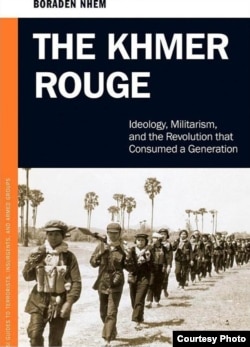The Khmer Rouge both as a movement and as a government was primarily military in nature, but its extreme militarism might have been a factor of its eventual collapse, a Cambodian author says.
Listen to the full Khmer interview here.
Nhem Boraden, author of “The Khmer Rouge: Ideology, Militarism and the Revolution that Consumed a Generation,” is currently a student at the US Army Command and General Staff College at Fort Leavenworth, Kansas.
In an interview with VOA Khmer, he said that while it could be called a failed state, and one without a civilian structure, the Khmer Rouge regime had all the elements of a modern military.
As a result, it was overambitious and overconfident and eventually provoked a conflict with Vietnam, which led to its demise, he said.
That lesson can be applied to the Middle East and Iraq, where political and social problems should be solved to prevent the development of similarly over-militarized organizations, Nhem Boraden said.
Many academic history books about the Khmer Rouge have tended to focus on the genocide and key individuals in the movement like Pol Pot, Ieng Sary, and Duch.
Nhem Boraden’s book, which draws heavily from materials collected by the Documentation Center of Cambodia, is one of the first to examine “the entire organizational life of the Khmer Rouge.”
“There were organized militia/guerillas, there were organized divisions in the provinces, which the Khmer Rouge called regions, and there were regional armies,” he said. “And the chief-of-staff headquarters [in Phnom Penh] controlled nine divisions, alone totaling up to 60,000 troops.”
He says the overwhelming presence of its military as the sole state structure might have given the Khmer Rouge a false sense of strength, leading to its fall.
He said the lack of a civilian structure also made the Khmer Rouge weak against the Vietnamese-installed People’s Republic of Kampuchea, which was rebuilding the country’s civilian administrative structure.
Nevertheless, the extreme guerrilla group helped extend Cambodia’s civil war for another two decades.
Nhem Boraden said that lesson can be applied to the Middle East, especially instability in Iraq. Civil war, instability, and military campaigns require committed recruits, and those recruits only fight when there is a social or political issue at stakes.
Without a good solution to these problems, the war risks becoming “chronic” just as we have seen in Cambodia in the past decades, he said.
The author stopped short of drawing a parallel between the Khmer Rouge and the Islamic State but said the circumstances that allowed the rise of both are similar.












